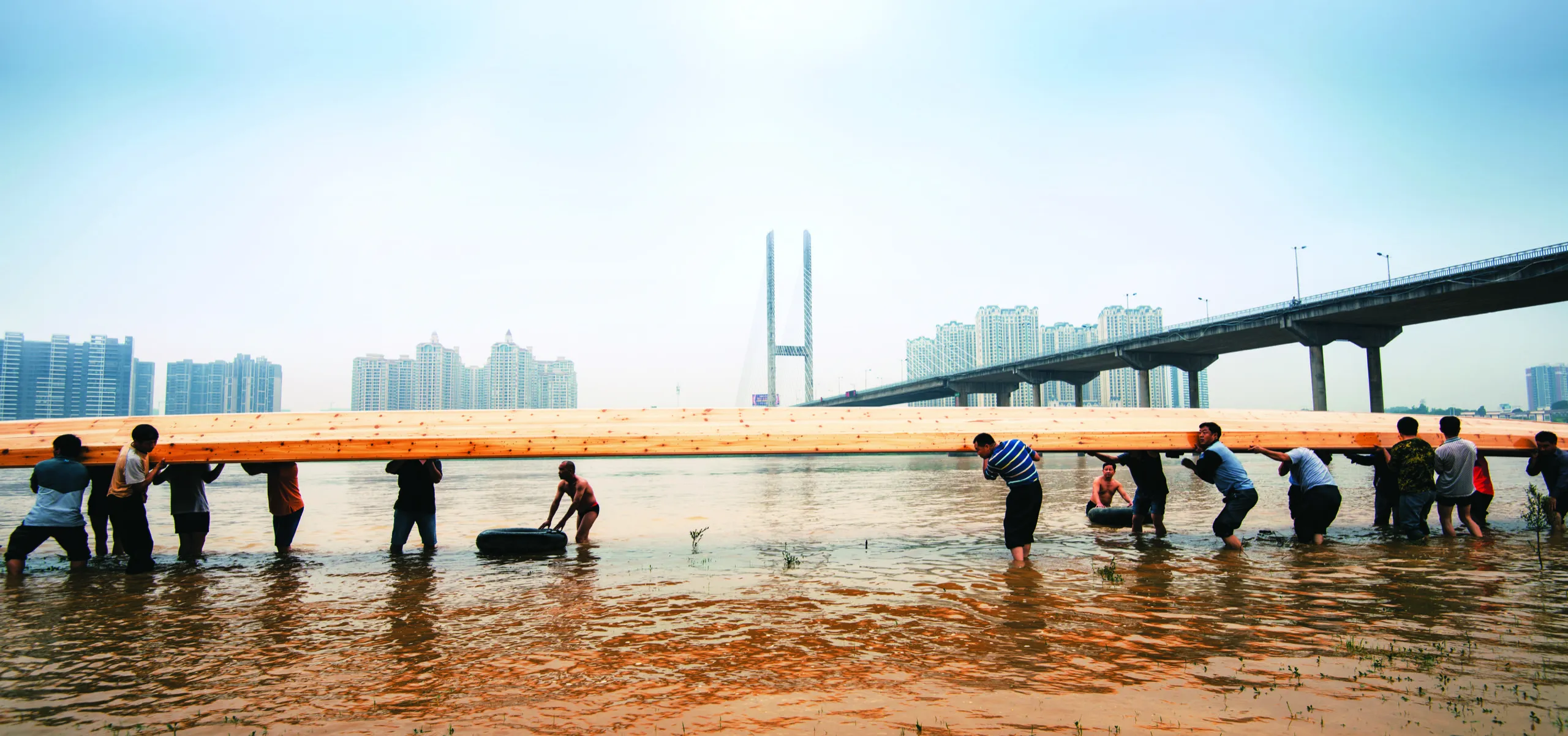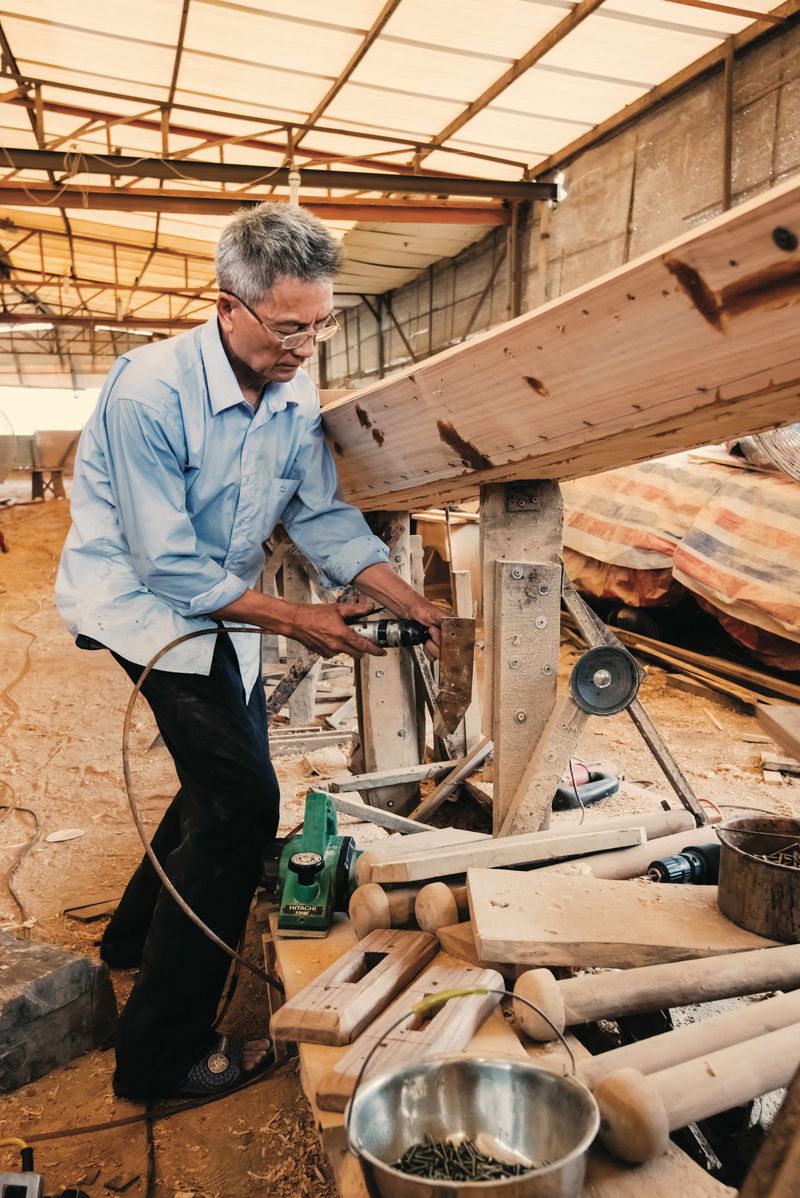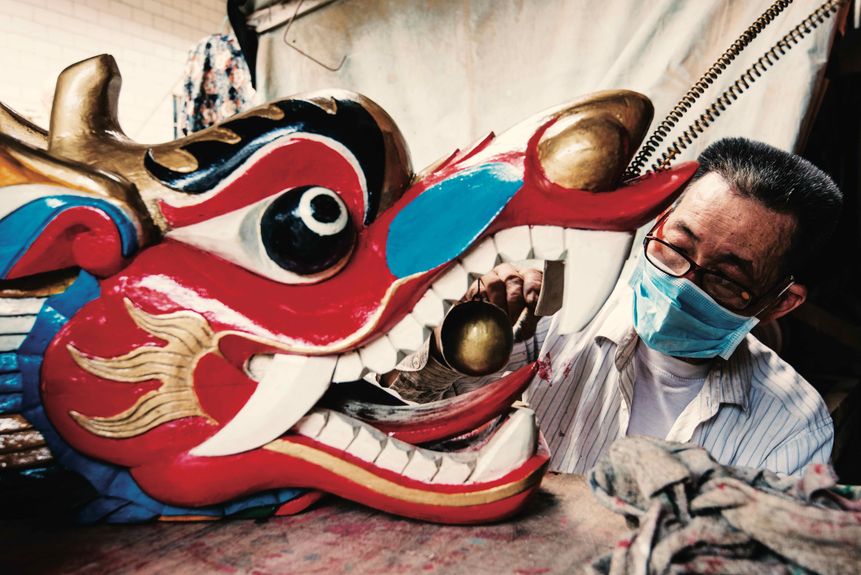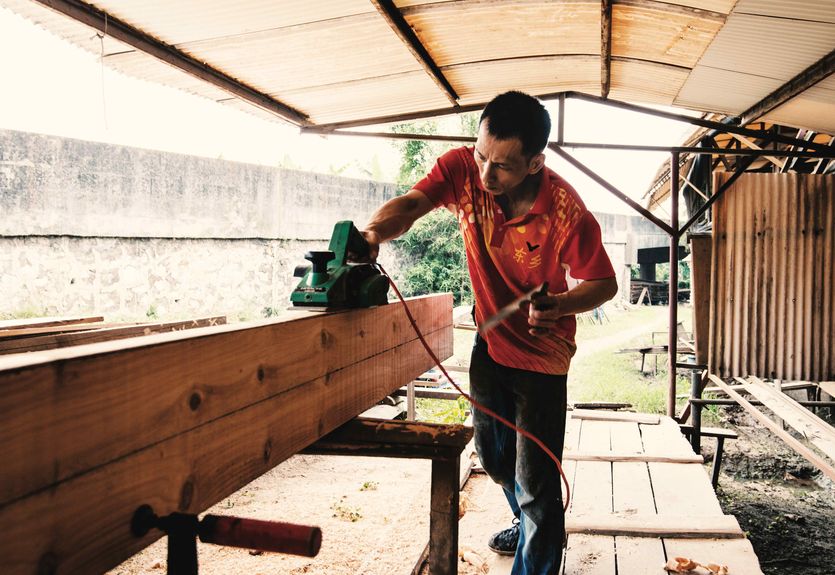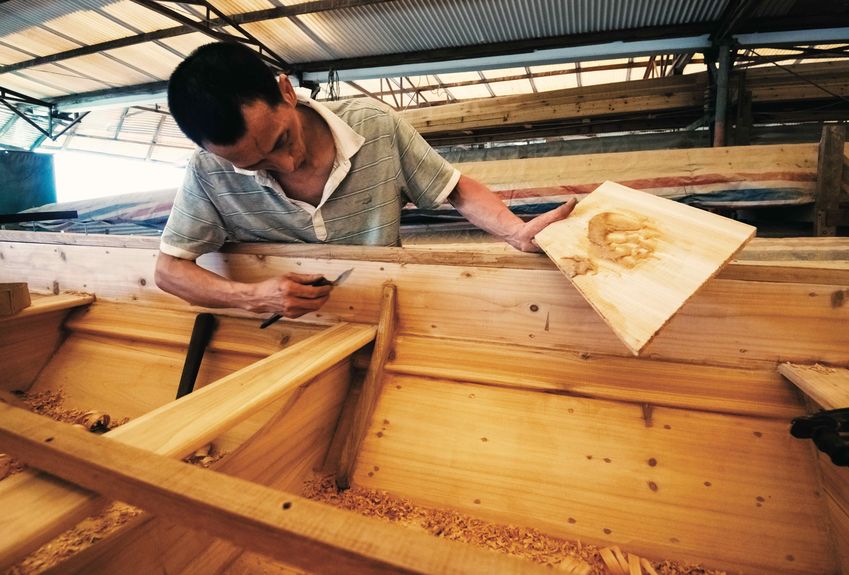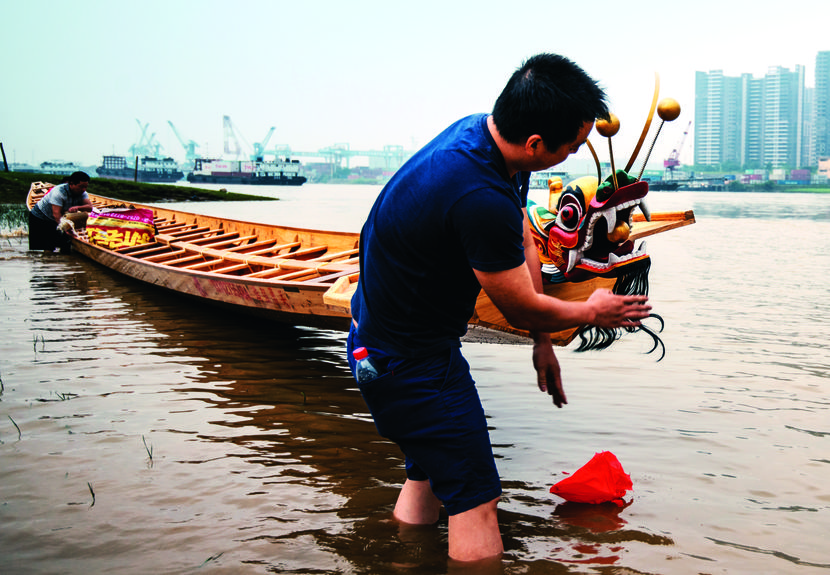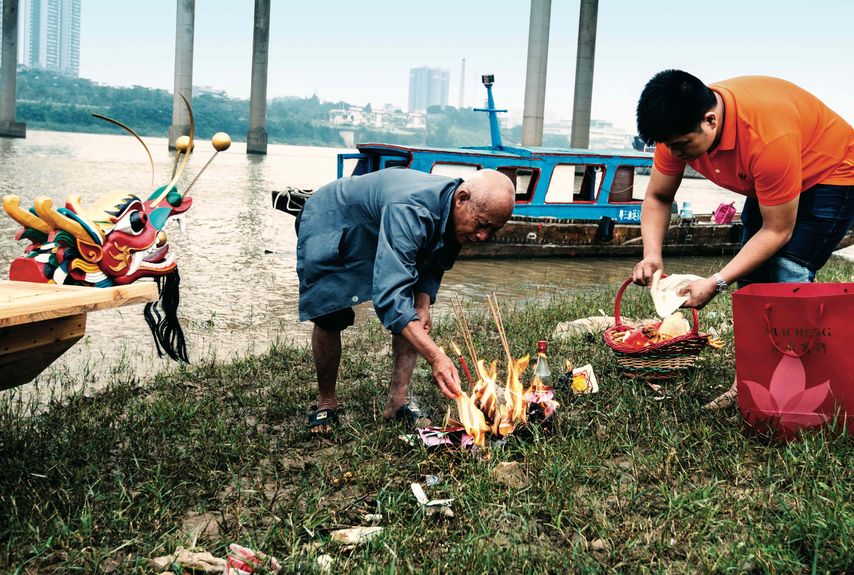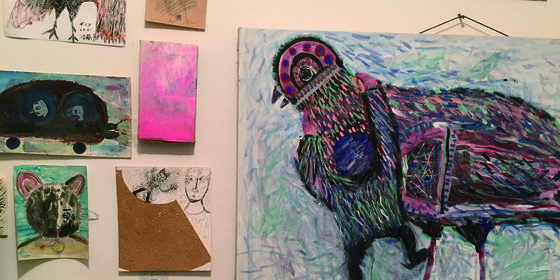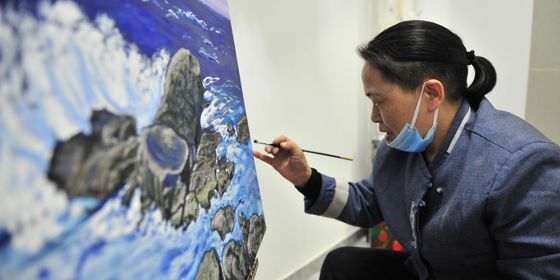Three generations of artisans ride the waves on dragon boats
In Sanshui (三水), a district of Foshan city in Guangdong province, three generations of a family have been riding the waves for more than 15 years. The patriarch, Guan Qunsu, 65, is a second-generation builder of “dragon boats,” the watercraft traditionally raced on China’s Duanwu (“Dragon Boat”) Festival in June of each year; Guan’s father, Guan Dui, used to work at the local shipyard, but started his own factory with his son after he retired. Not long after, Guan Qunsu’s twin sons also joined the family business, which they named “Guan Yongqiang Factory” after the youngest son.
Dragon boat-racing remains relatively popular in this area of China, so the demand for large boats is still growing. Still, it’s hard work, and the profits are slim. Small dragon boats can hold about five people, but the large racing boats can hold 40 to 80 rowers. The larger the boat is, the more complicated it is to manufacture. The largest boat the Guan family ever made was 46.9 meters long and required 90 rowers. The Guan family business is a big name in local dragon boat circles, known for careful workmanship.
With the convenient waterways in Guangdong province, boats used to be a major form of transportation, and the dragon decoration was meant to show the owner’s noble lineage. The launching of a dragon boat involved tremendous care; there would be a worship ceremony, prayers at ancestral temples, and a ritual inviting the mythical dragons themselves to attend the races. The modern customs are somewhat simpler—usually involving sacrifices to gods (usually chicken or pork), incense burning, and sometimes the sacrifice of a rooster, whose blood is then sprinkled from bow to stern in an earnest prayer for safety.
Today, most people think of dragon boat races only in conjunction with the Dragon Boat Festival, but in southern China, the races are held on many occasions, such as Labor Day and National Day—often between different villages in a spirit neighborly competition. Dragon boats are indelibly etched on the local cultural landscape as a pastime, an art form, and an industry. As Guan Qunsu puts it, “As long as I still have strength, I will carry on making dragon boats.”
Photography by Meng Qingchun (孟庆春)
This is a story from our archives. It was published originally published in 2016 and has been edited and republished in honor of the Dragon Boat Festival and TWOC’s upcoming 100th issue celebrations. Check out our subscription plans and discounts that will give you access to more great stories!





